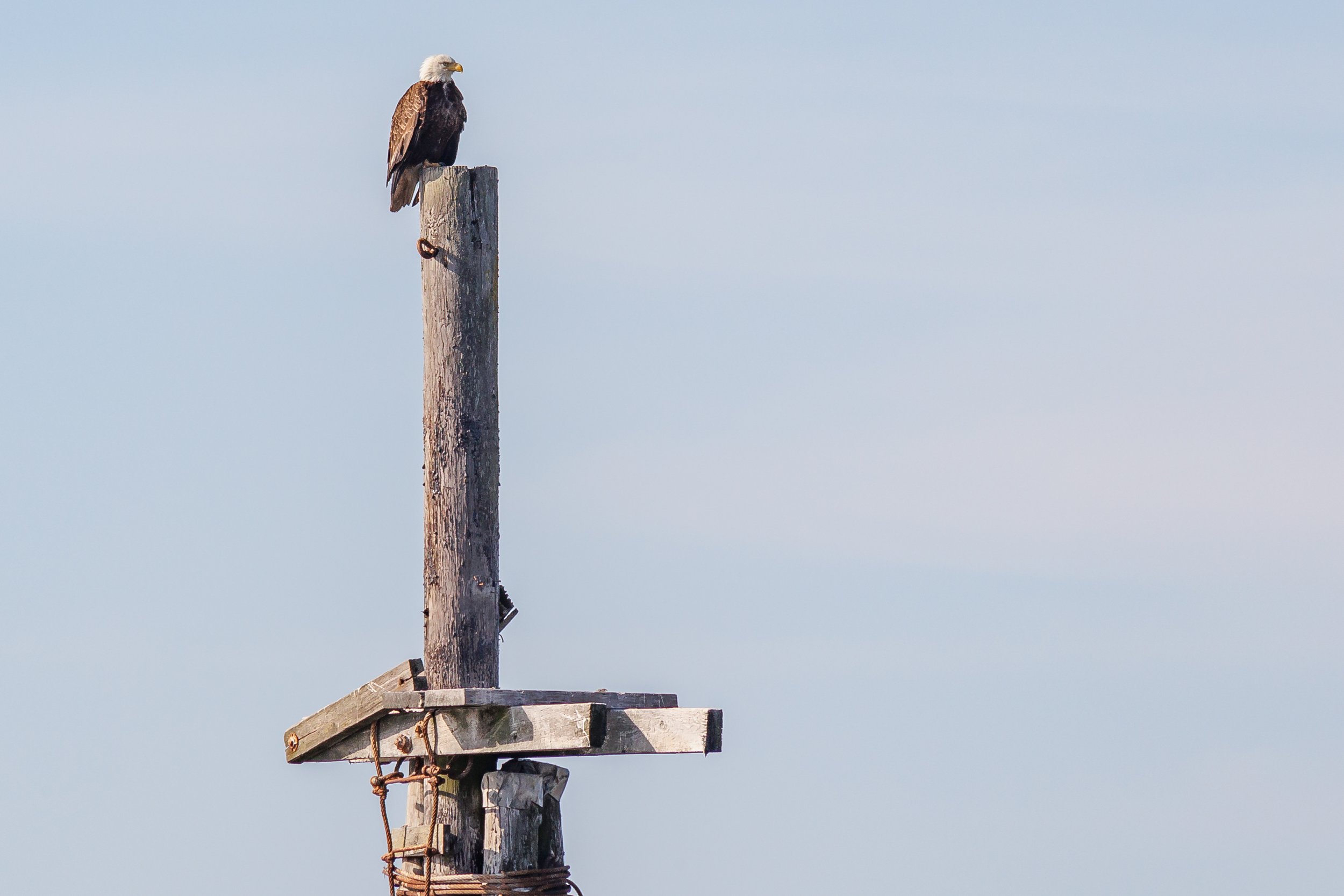June 8, 2023 3:30 - The T123s cruising by the BC coastline
It was a lovely day out in the Strait of Georgia this evening, with the sunshine making a nice appearance, before almost two full days of rain in the next two days. Today’s sighting led to us travelling over to the Mainland where we found Transient orcas west of Richmond.
Today’s pod consisted of 4 whales:
T123 Sidney ♀ (~1985)
T123A Stanley ♂ (2000)
T123C Lucky ♀ (2012)
T123D Darcy ♀ (2018)
Orca pods are matrilineal, run by the eldest female of the group. The matriarch is the mother of all members of the pod, though there are occasionally orcas that like to spend time with other pods outside of their own familial pod. The matriarch Sidney, on this day, was followed by her three children: Stanley, Lucky and Darcy. Males of orca pods tend to stay with their mothers their whole lives. Females will stay with their mother until they are sexually mature enough to have offspring of their own and feel ready to teach their young to hunt and speak their own unique dialect, just as their mother taught them.
The T123s are an exceptionally resilient pod, having survived an event in 2011 that resulted in them being beached during a very low tide in Prince Rupert. At that moment in time, only T123 Sidney and her eldest child T123A Stanley were accounted for and present on the beach. Based on the timing of the beaching event and orca gestation period, which is 16-18 months, Sidney was pregnant with T123C Lucky during this time. Seeing this pod in more recent years always makes us grateful for the resilience of orcas and their ability to move on from traumatic events of the past.
The harbour seals, on the other hand, are not as grateful. Orcas typically need to eat about 300 lbs of food every day. In a pod of four, such as the T123s, that would be roughly 5-6 harbour seals hunted every day. Transient orcas are also known to hunt harbour porpoises, sea lions and baby humpbacks or gray whales, though studies have shown that the marine mammal they eat the most is the harbour seal. With 100,000 harbour seals in British Columbia alone, we’re certain that the harbour seal population will be just fine being orca’s favourite snack.
Sea lions were a highlight of today’s tour, with “Stinky Rock” housing the Steller sea lions. The Steller sea lions breed up in Alaska and along Northern BC’s coast in late summer and fall, with males holding down their mating rock of up to 10-16 females surrounding them, waiting for mating to occur. On Stinky Rock next to Valdes Island, the largest male has begun to exhibit this behaviour, laying on the highest part of the rock above the much smaller females and challenging any other males that try to set even a single flipper on the rock. Year-round, we will see younger male and female Steller sea lions that aren’t of breeding age spending time on three different buoys that we see in the Strait of Georgia, either sleeping or trying to swim and find a spot on a buoy, much to the complaints of all the other sea lions already on the buoy and comfortable in their current spot.
Today’s photos were taken by Marine Naturalists Vanessa Vereschahen, Aly Kohlman and Des Poier.
T123A Stanley. Photo by Aly Kohlman.
T123D Darcy. Photo by Aly Kohlman.
T123A Stanley. Photo by Aly Kohlman.
T123 Sidney. Photo by Aly Kohlman.
T123A Stanley and his mother T123 Sidney. Photo by Aly Kohlman.
Left to right: T123D Darcy, T123C Lucky, and T123 Sidney (back). Photo by Aly Kohlman.
T123A Stanley. Photo by Aly Kohlman.
T123A Stanley. Photo by Aly Kohlman.
Left to right: T123D Darcy, T123 Sidney, and T123C Lucky. Photo by Vanessa Vereschahen.
T123A Stanley lifting his chin above the water and his mother T123 Sidney behind him. Photo by Vanessa Vereschahen.
River otter. Photo by Aly Kohlman.
Scritch-scratch. Photo by Aly Kohlman.
Snoozing Harbour seals. Photo by Aly Kohlman.
Photo by Aly Kohlman.
Someone looks stuck. Photo by Aly Kohlman.
Photo by Aly Kohlman.
Photo by Aly Kohlman.
Photo by Aly Kohlman.
Photo by Aly Kohlman.
What a size difference! Photo by Aly Kohlman.
Not all moments are completely photogenic… Photo by Aly Kohlman.
Photo by Aly Kohlman.
Photo by Aly Kohlman.
Photo by Aly Kohlman.
Photo by Des Poier.
Photo by Vanessa Vereschahen.
Photo by Vanessa Vereschahen.
Photo by Aly Kohlman.
Photo by Des Poier.
Our Semi-covered vessel, Kula. Photo by Vanessa Vereschahen.
Our Open Vessel, Keta. Photo by Vanessa Vereschahen.































